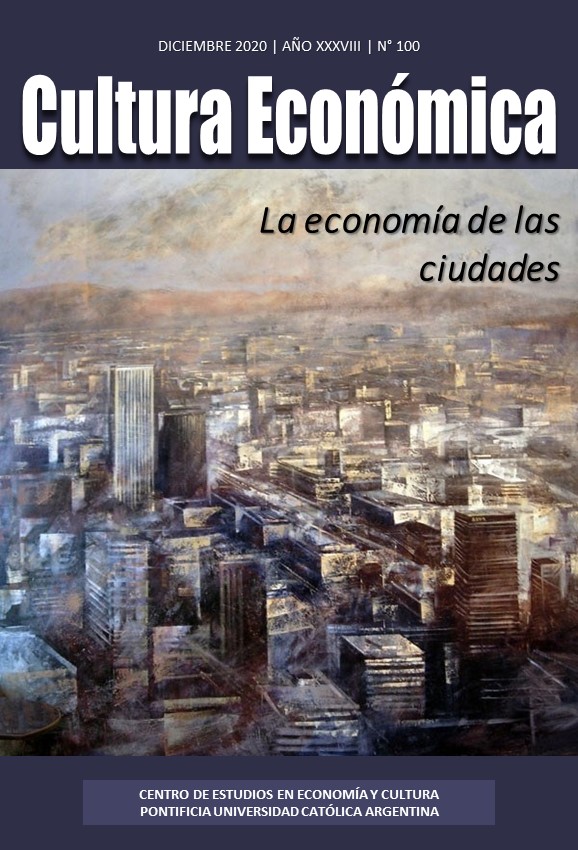Next Generation EU. An opportunity for a stronger Europe
Keywords:
EUROPEAN UNION, NEXT GENERATION EU, SOCIAL AND ECONOMIC RECOVERY FROM THE COVID-19 CRISIS, EUROPEAN INTEGRATION PROCESSAbstract
The agreement reached by the European Council in July 2020 to support the recovery of the countries struck by the COVID 19 crisis was a landmark event. The Next Generation EU and 2021-2027 EU budget were approved, two closely related instruments implementing a strategy designed to stimulate both the reactivation of the national economies and contemporaneously, the sustainable development of Europe. The action taken constitutes an extraordinary effort, due to the volume of the financial resources involved, to be divided amongst the countries according to the various levels of need, based on their respective national recovery and resilience plans. The most important innovation was the decision to collectively incur debt to finance the aid package, and to pay back part of the amount owed with new «own resources», that is, new European taxes/duties (e.g. the carbon and web taxes). In this way we are moving towards a European fiscal system. Despite this, the negotiation process that led to the agreement highlighted pre-existing fractures that have not been repaired: some among the countries themselves (above all the «frugal» Northern nations and those of the South) and others between intergovernmental Europe and the Europe of the EU policies. The European Parliament, for its part, is demanding a budget increase in a bid to avoid sacrificing a number of key EU programmes. Although tension is running high, and the many difficulties threatening the final decisions that would implement the Next Generation EU, there appears to be no way of backing out. The elements at stake not only include the ability to overcome the current social-economic crisis, but also the European integration plan and the EU’s position on the international scene. Two factors will prove decisive in the next few years: the ability of the European Commission to adequately steer and oversee the national plans, and the will of the governments to setting out a reform and investment agenda, as well as an efficient management of the funds.
Downloads
References
Altomonte (2020). Non c’è Europa senza beni pubblici europei. Italia, Lavoce.info. https://www.lavoce.info/archives/69762/non-ce-europa-senza-beni-pubblici-europei/
Comisión Europea (2020a). Proposal for a Regulation of the European Parliament and of the Council establishing a Recovery and Resilience Facility. Brussels, COM (2020) 408 final.
Comisión Europea (2020b). Comunicación de la Comisión al Parlamento Europeo, al Consejo Europeo, al Consejo, al Comité Económico y Social Europeo y al Comité de las Regiones. El momento de Europa: reparar los daños y preparar el futuro para la próxima generación. Bruselas, COM (2020) 456 final.
Comisión Europea (2020c). Comunicación de la Comisión al Parlamento Europeo, al Consejo Europeo, al Banco Central Europeo, al Comité Económico y Social Europeo, al Comité de las Regiones y al Banco Europeo de Inversiones. Estrategia anual de crecimiento sostenible 2021. Bruselas, COM (2020) 575 final.
Comisión Europea (2020d). Commission Staff Working Document Guidance to Member States Recovery and resilience plans. Part 1/2. Brussels, SWD (2020) 205 final.
Comisión Europea (2020e). Commission Staff Working Document Guidance to Member States Recovery and resilience plans. Part 2/2. Brussels, SWD (2020) 205 final.
Consejo Europeo (2020). Conclusiones de la reunión extraordinaria del Consejo Europeo (17, 18, 19, 20 y 21 de julio de 2020). https://www.consilium.europa.eu/media/45124/210720-euco-final-conclusions-es.pdf
Deutsche Welle (2020). “Merkel: la UE enfrenta el «mayor desafío» de su historia por coronavirus”. Deustsche Welle. https://www.dw.com/es/merkel-la-ue-enfrenta-el-mayordesaf%C3%ADo-de-su-historia-por-coronavirus/a-53040532
Donati, N. (2020). A quali condizioni? Recovery fund, riforme strutturali e contraddizioni dell’unione monetaria. Milano: Fondazione Giangiacomo Feltrinelli. https://fondazionefeltrinelli.it/a-quali-condizioni-recovery-fund-riforme-strutturali-e-contraddizioni-dellunione-monetaria/
Eurostat (2020). GDP and employment flash estimates for the second quarter of 2020. GDP down by 12.1% and employment down by 2.8% in the euro area. Newsrelease euroindicators 125/2020, 14 August 2020.
Fabbrini, S. (2020). Prima l'Europa. Prima l'Europa. È l'Italia che lo chiede, Roma: IlSole24Ore.
Giovannini, A., Hauptmeier, S., Leiner-Killinger N. & Valenta, V. (2020). “The fiscal implications of the EU’s recovery package”. Economic Bulletin Boxes. European Central Bank, Vol. 6.
Kangas, O. (2020). “Finland: Policy measures in response to the COVID-19 pandemic”. European Social Policy Network. Flash Report 2020/59. https://ec.europa.eu/social/main.jsp?langId=en&catId=1135&furtherNews=yes&newsId=9805
Klatzer, E. & Rinaldi, A. (2020). “#nextGenerationEU” Leaves Women Behind. Gender Impact Assessment of the European Commission Proposals for the EU Recovery Plan. Study commissioned by The Greens/EFA Group in the European Parliament, initiated by Alexandra Geese, MEP. https://alexandrageese.eu/wp-content/uploads/2020/07/Gender-Impact-Assessment-NextGenerationEU_Klatzer_Rinaldi_2020.pdf
Mazzucato, M. (2020). “The success of the EU recovery fund will depend on bold missions”, London: Financial Times.
https://www.ft.com/content/b26f6785-e08a-450b-8c62-bdafbeb5ff2c
Parlamento Europeo (2020a). Resolución del Parlamento Europeo, de 23 de julio de 2020, sobre las Conclusiones de la reunión extraordinaria del Consejo Europeo de los días 17 a 21 de julio de 2020 (2020/2732(RSP)). https://www.europarl.europa.eu/doceo/document/TA-9-2020-07-23_ES.html
Parlamento Europeo (2020b). Resolución legislativa del Parlamento Europeo, de 16 de septiembre de 2020, sobre el proyecto de Decisión del Consejo sobre el sistema de recursos propios de la Unión Europea (10025/2020 – C9-0215/2020 – 2018/0135(CNS). https://www.europarl.europa.eu/doceo/document/TA-9-2020-0220_ES.html
Picek, O. (2020). “Spillover effects from Next Generation EU”, Intereconomics Review of European Economic Policy, 55(5), 325-331.
Downloads
Published
How to Cite
Issue
Section
License













